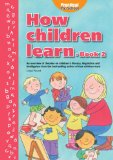Featured
Posted by Kathy Brodie on February 2, 2009.
Kathy Brodie on February 2, 2009.

Introduction: The Power of Sustained Shared Thinking
Have you ever had one of those magical moments with a child where you’re both completely absorbed in a conversation or activity? Where you’re genuinely interested in each other’s ideas and you come away feeling like you’ve both learned something new? Those wonderful moments are the essence of Sustained Shared Thinking (SST).
Sustained Shared Thinking isn’t just a fancy educational term – it’s a powerful approach that can transform how we interact with young children. At its core, SST is about those extended, meaningful exchanges where adults and children work together to solve problems, explore ideas, or create something new.
Imagine you’re with 5-year-old Amir who’s playing with blocks. He’s trying to build a bridge, but it keeps collapsing. Instead of showing him how to do it, you might ask, “What do you think is making the bridge fall down?” This simple question opens up a world of possibilities for discussion and discovery about balance, structure, and problem-solving.
Why is SST so important? Well, it’s not just because it makes for lovely interactions (though it certainly does!). SST has been shown to have significant benefits for children’s development:
- It boosts cognitive skills
- It enhances language development
- It supports social and emotional growth
- It nurtures creativity and problem-solving abilities
Research has consistently shown that settings where SST is regularly practiced tend to have better outcomes for children. The EPPE project, a large-scale study in the UK, found that SST was a key feature of more effective pre-school settings (Sylva et al., 2004).
But here’s the thing: SST isn’t just for ‘special’ times. It can happen anywhere, anytime – during nappy changes, while playing with blocks, or even during snack time. The key is being present, listening actively, and genuinely engaging with children’s ideas.
In this article, we’ll explore why SST is so crucial in early years settings. We’ll look at its impact on child development, its role in quality provision, and its relevance in addressing current challenges in early years education. We’ll also consider how it can enhance relationships between practitioners, children, and parents.
So, whether you’re new to the concept of SST or looking to deepen your understanding, buckle up! We’re about to embark on a journey into the wonderful world of shared thinking. And who knows? By the end, you might find yourself looking at your everyday interactions with children in a whole new light.
Get Our In-Depth Online Course on Sustained Shared Thinking with Kathy Brodie
This course will equip you with practical techniques to transform every interaction into a valuable learning opportunity, engaging children in meaningful dialogues and creating environments that nurture deep thinking.
The Significance of SST in Child Development
When we engage in Sustained Shared Thinking with children, we’re not just having a nice chat – we’re actively supporting their development in multiple areas. Let’s explore how SST contributes to different aspects of a child’s growth.
Cognitive Development
SST is a powerful tool for boosting children’s thinking skills. When we engage in these extended, meaningful interactions, we’re helping children to:
- Develop problem-solving skills
- Enhance critical thinking
- Improve memory and recall
Imagine you’re in the garden with 4-year-old Lily, who’s wondering why her sunflower isn’t growing as tall as her friend’s. Instead of simply explaining, you might ask, “What do you think the sunflower needs to grow taller?” This prompts Lily to think critically about plant growth and problem-solve.
Research shows that children who experience high-quality SST often demonstrate more advanced cognitive abilities (Siraj-Blatchford et al., 2002). They’re better equipped to tackle challenges and think creatively.
Language and Communication Skills
It’s probably no surprise that SST is brilliant for language development. These rich conversations provide:
- Vocabulary expansion
- Practice in expressing ideas
- Improved listening skills
For instance, during a cooking activity with 5-year-old Zain, you might introduce words like ‘whisk’, ‘blend’, or ‘simmer’. As you discuss the process, Zain gets to practice using these new words in context.
Social and Emotional Growth
SST isn’t just about academic skills – it plays a crucial role in children’s social and emotional development too:
- Building confidence
- Developing empathy
- Strengthening relationships
When 3-year-old Ava is upset about sharing a toy, engaging her in a conversation about feelings and fairness is SST in action, supporting her emotional development.
Creativity and Problem-Solving
SST encourages children to think outside the box and come up with novel solutions. It fosters:
- Imaginative thinking
- Flexible problem-solving
- Innovation skills
Picture 6-year-old Tom trying to build a den that keeps falling down. Through SST, you might explore different construction methods, materials, or designs, encouraging Tom’s creative problem-solving skills.
Metacognition and Self-Regulation
Perhaps one of the most powerful benefits of SST is its impact on metacognition – thinking about thinking:
- Awareness of thought processes
- Planning and reflection skills
- Self-regulation abilities
When you ask 5-year-old Maya, “How did you figure out how to balance those blocks?”, you’re prompting her to reflect on her own thinking process.
The long-term impact of these skills shouldn’t be underestimated. Children who develop strong metacognitive abilities in early years are better equipped for future learning and problem-solving (Whitebread & Coltman, 2010).
Remember, every SST interaction, no matter how small, contributes to this rich tapestry of development. Whether you’re discussing why leaves change colour in autumn or exploring why some objects float and others sink, you’re laying the groundwork for lifelong learning and growth.
In our next section, we’ll look at how SST has become a key indicator of quality in early years settings. But for now, take a moment to reflect – how might you incorporate more SST into your daily interactions with children?
SST as a Key Indicator of Quality in Early Years Settings
When we talk about quality in early years settings, what springs to mind? Is it the shiny new resources, the beautifully arranged environment, or perhaps the detailed planning documents? While these all have their place, research increasingly points to the quality of interactions – particularly Sustained Shared Thinking – as a crucial marker of high-quality provision.
The Research Backing
The landmark EPPE (Effective Provision of Pre-school Education) project in the UK was one of the first large-scale studies to highlight the importance of SST. The researchers found that the most effective settings encouraged Sustained Shared Thinking (Sylva et al., 2004). But what does this look like in practice?
Imagine you’re observing two different settings:
- In the first, the room is beautifully set up with top-notch resources. The children are busy, but the adults mainly supervise and manage behaviour.
- In the second, the resources are more modest, but you notice adults deeply engaged with children, asking open-ended questions and collaboratively solving problems.
Which would you consider higher quality? The EPPE project suggests it’s the second setting that’s likely to have better outcomes for children.
Alignment with Curriculum Goals
It’s not just researchers who recognise the value of SST. Let’s look at how it aligns with some key areas of the Early Years Foundation Stage (EYFS) in England:
- Communication and Language: SST provides rich opportunities for language development and active listening.
- Personal, Social and Emotional Development: Through SST, children learn to express their ideas and consider others’ perspectives.
- Understanding the World: SST often involves exploring and making sense of the world around us.
- Characteristics of Effective Learning: SST supports all three characteristics – playing and exploring, active learning, and creating and thinking critically.
For example, when you engage in SST with 4-year-old Jasmine about why her ice lolly is melting, you’re not just exploring scientific concepts. You’re also developing her language, encouraging critical thinking, and fostering her curiosity about the world.
SST and the Adult Role
One of the reasons SST is such a strong indicator of quality is that it requires skilled adult intervention. It’s not about leaving children to their own devices or about didactic teaching. Instead, it’s about that delicate balance of support and challenge.
The adult role in SST involves:
- Active listening
- Asking open-ended questions
- Providing just enough support to extend thinking
- Knowing when to step back
This skilled interaction is what sets high-quality settings apart. As Siraj-Blatchford et al. (2002) noted, it’s the “meetings of minds” between adult and child that seem to be particularly important.
Beyond Academic Skills
It’s worth noting that SST isn’t just about academic or cognitive skills. High-quality settings use SST to support all areas of development, including social and emotional skills.
For instance, when 3-year-old Alex is struggling to join in with a group game, a skilled practitioner might engage him in SST about feelings and social strategies, rather than simply solving the problem for him.
A Tool for Reflection
Recognising SST as a quality indicator gives us a valuable tool for reflection and improvement. We can ask ourselves:
- How often do we engage in SST throughout the day?
- Are all children experiencing these rich interactions?
- How can we create more opportunities for SST?
By focusing on improving the quality and quantity of our SST interactions, we can enhance the overall quality of our provision.
In our next section, we’ll explore the long-term impact of SST. But for now, why not take a moment to reflect on your own practice? How might you increase opportunities for those “meetings of minds” in your setting?
The Long-Term Impact of SST
When we engage in Sustained Shared Thinking with young children, we’re not just impacting their day-to-day experiences – we’re laying the groundwork for their future success. Let’s explore how those thoughtful conversations and shared problem-solving moments can have lasting effects.
School Readiness and Academic Performance
One of the most immediate long-term impacts of SST is its effect on school readiness. Children who have experienced rich SST interactions tend to:
- Have more advanced language skills
- Show better problem-solving abilities
- Demonstrate greater social competence
Imagine 5-year-old Mia, who’s had plenty of SST experiences in her nursery. When she starts school, she’s more likely to confidently ask questions, tackle new challenges, and express her ideas clearly. These skills give her a solid foundation for formal learning.
Research backs this up. The EPPE project found that children from pre-school settings where SST was frequently practised showed better intellectual and social development as they progressed through primary school (Sylva et al., 2004).
Lifelong Learning Skills
Beyond academic readiness, SST helps foster skills that are crucial for lifelong learning:
- Critical thinking
- Creativity
- Metacognition (thinking about thinking)
- Self-regulation
These aren’t just useful for school – they’re essential life skills. For instance, when 4-year-old Zack learns through SST to think through a problem before acting, he’s developing self-regulation skills that will serve him well into adulthood.
Social and Emotional Competence
The impact of SST on social and emotional development shouldn’t be underestimated. Children who regularly engage in SST often show:
- Greater empathy
- Better communication skills
- Improved ability to understand and manage emotions
Consider 3-year-old Ava, who through SST learns to articulate her feelings and consider others’ perspectives. These skills will help her navigate social relationships throughout her life.
Curiosity and Love for Learning
Perhaps one of the most beautiful long-term impacts of SST is how it nurtures a child’s natural curiosity and love for learning. By engaging children in meaningful, thought-provoking interactions, we’re showing them that:
- Their ideas are valuable
- Learning is enjoyable
- Questions are welcome
This attitude towards learning can last a lifetime. As Robson (2012) notes, children who develop a love for learning in their early years are more likely to become lifelong learners.
Impact on Future Career Skills
While it might seem far off, the skills developed through SST align closely with what employers often seek:
- Problem-solving
- Collaboration
- Communication
- Adaptability
When we engage 6-year-old Tom in SST about how to build a stable tower with blocks, we’re not just helping him with construction – we’re nurturing skills he might use one day as an engineer, architect, or project manager.
A Ripple Effect
It’s worth noting that the impact of SST can extend beyond the individual child. Children who are skilled in SST-related abilities like critical thinking and effective communication can positively influence their peers, creating a ripple effect of enhanced learning and development.
The key takeaway? The time we invest in SST today can have far-reaching effects on children’s futures. Every thoughtful question, every shared problem-solving moment, every collaborative exploration is contributing to the development of capable, confident, and curious lifelong learners.
In our next section, we’ll look at how SST can help address some of the current challenges in early years education. But for now, take a moment to consider: How might the SST interactions you’re having today shape the adults of tomorrow?
SST’s Relevance in Addressing Current Early Years Challenges
In today’s rapidly changing world, early years settings face a unique set of challenges. The good news? Sustained Shared Thinking can be a powerful tool in addressing many of these issues. Let’s explore how SST can help us navigate some of the current hurdles in early years education.
Supporting Children with Diverse Needs
One of the biggest challenges in early years settings is meeting the needs of all children, especially those with special educational needs and disabilities (SEND) or those learning English as an additional language (EAL).
SST can help by:
- Allowing for personalised interactions tailored to each child’s needs
- Providing opportunities for language development at the child’s own pace
- Encouraging problem-solving skills in a supportive environment
For example, when engaging in SST with 4-year-old Amir, who has autism, you might use visual aids and follow his lead in exploring a topic he’s passionate about, like trains. This approach supports his communication skills while respecting his individual interests and needs.
Bridging Home-Setting Learning Gaps
The pandemic has highlighted the importance of strong home-setting links. SST can play a crucial role in bridging any gaps:
- It can be easily explained to parents and practised at home
- It doesn’t require special resources, making it accessible to all families
- It can help create continuity between home and setting experiences
Imagine sending home a simple SST prompt related to your current topic. For instance, if you’re exploring ‘Growth’, you might suggest parents engage their child in SST about a plant growing in their home or garden. This not only extends learning but also strengthens the home-setting partnership.
Enhancing Digital-Age Learning Experiences
In our increasingly digital world, there’s a concern about screen time and its impact on young children’s development. SST can help balance this:
- It encourages face-to-face interactions and real-world problem-solving
- It can be used to explore and make sense of digital experiences
- It develops skills (like critical thinking) that are crucial in the digital age
For instance, after watching a short educational video about the water cycle, you might engage 5-year-old Zoe in SST about where she thinks the rain in your garden comes from. This helps her connect digital content with real-world observations.
Addressing the ‘Covid Gap’
The disruptions caused by the pandemic have led to concerns about children’s development, often referred to as the ‘Covid gap’. SST can be a powerful tool in addressing this:
- It allows for individualised support based on each child’s needs
- It can help rebuild social skills and confidence
- It supports language development, which may have been impacted by reduced social interactions
When 3-year-old Tom, who’s been at home for several months, returns to your setting, engaging him in gentle SST about his experiences can help him settle in and express any worries or excitements he might have.
Promoting Mental Health and Wellbeing
With increasing awareness of the importance of mental health in the early years, SST can play a vital role:
- It helps children express and understand their emotions
- It builds self-esteem by valuing children’s thoughts and ideas
- It develops problem-solving skills, boosting resilience
For example, when 4-year-old Lily is feeling frustrated with a puzzle, engaging her in SST about her feelings and potential strategies not only helps solve the immediate problem but also builds emotional literacy and resilience.
Supporting the Characteristics of Effective Learning
The EYFS emphasises the importance of how children learn, not just what they learn. SST aligns perfectly with this focus:
- It encourages active learning by engaging children deeply in topics
- It supports creating and thinking critically by posing thoughtful questions
- It promotes playing and exploring by following children’s interests
When you notice 5-year-old Max is fascinated by shadows in the playground, using SST to explore this interest supports all these characteristics of effective learning.
The key message? SST isn’t just a ‘nice to have’ – it’s a flexible, powerful tool that can help us address many of the current challenges in early years education. By embedding SST in our practice, we’re not only supporting children’s immediate development but also equipping them with the skills they need to thrive in an ever-changing world.
In our next section, we’ll explore the crucial role of the practitioner in maximising the impact of SST. But for now, why not reflect on a current challenge in your setting? How might SST help you address it?
Get Our In-Depth Online Course on Sustained Shared Thinking with Kathy Brodie
This course will equip you with practical techniques to transform every interaction into a valuable learning opportunity, engaging children in meaningful dialogues and creating environments that nurture deep thinking.
The Practitioner’s Role in Maximising SST’s Impact
When it comes to Sustained Shared Thinking, the practitioner’s role is absolutely crucial. It’s not just about being present – it’s about being present in the right way. Let’s explore how we, as practitioners, can make the most of SST opportunities.
The Art of Active Listening
At the heart of effective SST is active listening. This means:
- Giving children our full attention
- Showing genuine interest in their ideas
- Using non-verbal cues to encourage them to continue
Imagine 4-year-old Ava is telling you about her weekend trip to the beach. Instead of just nodding along, you might say, “You found a shell with a hole in it? I wonder how that hole got there.” This shows you’re really listening and encourages further exploration.
Asking the Right Questions
The questions we ask can make or break an SST interaction. Good questions:
- Are open-ended
- Encourage deeper thinking
- Follow the child’s lead
For example, when 5-year-old Zain is building a tall tower, instead of asking, “Is that a house?”, you might say, “I’m curious about how you decided where to put each block.” This invites him to explain his thinking process.
Creating a Thinking-Friendly Environment
Our role extends beyond direct interactions. We need to create an environment that supports SST:
- Provide open-ended resources that spark curiosity
- Allow ample time for exploration and discussion
- Create cosy spaces where deep conversations can happen
Think about your setting. Is there a quiet corner where you can sit and chat with a child without interruption? Are there interesting objects or pictures that might spark a conversation?
Recognising and Seizing SST Moments
SST opportunities can pop up anywhere, anytime. Our job is to spot them and make the most of them. This might mean:
- Being flexible with our plans
- Following children’s interests, even if they seem off-topic
- Seeing everyday routines as potential SST moments
For instance, when 3-year-old Leo becomes fascinated by the bubbles during hand washing, seize the moment! “I wonder why the bubbles pop when we clap our hands?” can lead to a wonderful exploration of cause and effect.
Scaffolding Thinking
In SST, we’re not just passive listeners. We play an active role in extending children’s thinking:
- Offer just enough support to help children reach the next level of understanding
- Model thinking processes out loud
- Introduce new vocabulary in context
When 6-year-old Mia is struggling to remember the life cycle of a butterfly, you might say, “Let’s think about this together. What’s the first stage we remember?” This scaffolds her recall without simply giving her the answer.
Building Strong Relationships
SST thrives on strong, trusting relationships. As practitioners, we can:
- Show genuine interest in each child’s thoughts and ideas
- Create a safe space where children feel comfortable sharing
- Celebrate children’s thinking processes, not just their ‘correct’ answers
Remember, children are more likely to engage in deep thinking with adults they trust and feel valued by.
Reflecting on Our Practice
To truly maximise SST’s impact, we need to regularly reflect on our practice:
- Keep a journal of SST moments – what worked well? What could you improve?
- Use video observations (with appropriate permissions) to analyse your interactions
- Seek feedback from colleagues and children
As Siraj-Blatchford et al. (2002) note, the most effective settings are those where practitioners regularly reflect on and discuss their pedagogical practices.
Continuous Professional Development
SST is a skill that we can always refine. Consider:
- Attending training sessions on SST techniques
- Reading current research on cognitive development and early years pedagogy
- Observing colleagues who are skilled in SST
Remember, every interaction is a chance to hone our SST skills. The more we practice, the more natural and effective our SST interactions will become.
In our next section, we’ll look at how SST can be a powerful tool for parental engagement. But for now, why not challenge yourself to have at least three intentional SST interactions tomorrow? Reflect on how they go – you might be surprised at the depth of thinking you unlock!
SST as a Tool for Parental Engagement
We all know that parents are children’s first and most enduring educators. But how can we harness the power of Sustained Shared Thinking to strengthen the crucial partnership between settings and homes? Let’s explore how SST can be a brilliant tool for parental engagement.
Introducing Parents to SST
First things first – we need to help parents understand what SST is and why it’s so valuable. Consider:
- Hosting a parent workshop on SST
- Creating an easy-to-read leaflet explaining SST
- Sharing examples of SST moments in your setting’s newsletter
Imagine sending home a simple guide titled “5 Ways to Think Together”, with practical tips like “Wonder aloud about everyday things” or “Ask your child ‘What do you think?’ when problem-solving together”.
Extending SST to Home Environments
SST doesn’t require special equipment or a classroom setting. It can happen anywhere, anytime. Encourage parents to:
- Use daily routines as SST opportunities (e.g., bath time, cooking together)
- Look for ‘wondering’ moments during outings or while watching TV
- Create a ‘question of the week’ for the family to ponder together
For instance, suggest that during bath time, parents might ask, “I wonder why some things float and others sink?” This simple question can lead to rich discussions and even some impromptu experiments!
Building Two-Way Communication
SST is all about shared thinking, and the same principle applies to our communication with parents:
- Invite parents to share their SST moments from home
- Use a communication book or app to exchange SST ideas
- Create a ‘Thinking Wall’ in your setting where parents can contribute questions or ideas
You might ask 4-year-old Zain’s mum to jot down any interesting questions he asks at home. This not only gives you insight into his thinking but also shows parents that their input is valued.
Supporting Diverse Families
Remember, SST can look different in different cultures and family contexts:
- Provide SST tips in multiple languages if needed
- Be sensitive to cultural differences in adult-child interactions
- Offer a range of SST ideas to suit different family situations
For example, for a family where grandparents are the main carers, you might suggest SST around family history or traditional stories.
Using Technology to Bridge the Gap
In our digital age, technology can be a great tool for promoting SST at home:
- Share short video clips demonstrating SST in action
- Use your setting’s social media to post weekly SST prompts
- Suggest educational apps that encourage shared thinking
You could create a quick video showing how you engaged in SST with 3-year-old Lily about why leaves change colour in autumn, giving parents a clear model to follow.
Celebrating Home Learning
It’s important to recognise and value the SST happening at home:
- Create displays showcasing SST moments shared by families
- Have a ‘Thinker of the Week’ award that includes home thinking
- Use parent evenings to discuss SST progress both at home and in the setting
This not only encourages parents to engage in SST but also helps children see the connection between home and setting learning.
Addressing Common Challenges
Parents might face some hurdles in implementing SST. Be prepared to offer support:
- For time-pressed parents, suggest quick SST moments during car rides or while waiting in queues
- For those lacking confidence, remind them that it’s okay not to have all the answers – wondering together is the goal
- For families with multiple children, offer ideas for whole-family SST activities
Remember, as Robson (2012) notes, when parents engage in meaningful interactions with their children, it not only enhances learning but also strengthens family bonds.
The Ripple Effect
When we engage parents in SST, the benefits ripple out beyond just that child. Parents might:
- Use SST techniques with siblings
- Share ideas with other family members or friends
- Develop their own critical thinking skills
Imagine 5-year-old Amir’s dad telling you how he’s started using SST questions with his colleagues at work!
By embracing SST as a tool for parental engagement, we’re not just enhancing children’s learning – we’re fostering a community of thinkers. We’re showing parents that they don’t need special knowledge or resources to support their child’s cognitive development. All they need is curiosity, attentiveness, and a willingness to wonder together.
In our final section, we’ll wrap up by reflecting on the crucial role of SST in early years practice. But for now, why not brainstorm three simple SST activities you could suggest to parents this week?
Conclusion: Embracing SST in Early Years Practice
As we wrap up our exploration of Sustained Shared Thinking, let’s take a moment to reflect on why it’s so crucial in early years education and how we can fully embrace it in our practice.
The Power of SST
We’ve seen how SST can:
- Boost cognitive development
- Enhance language skills
- Support social and emotional growth
- Prepare children for future learning
Remember 4-year-old Zain building his tower? That simple interaction, where you asked him about his building strategy, wasn’t just about blocks. It was about developing critical thinking, problem-solving, and communication skills – all through the power of shared thinking.
Quality Interactions Matter
SST isn’t about expensive resources or complex planning. It’s about the quality of our interactions with children. As the EPPE project showed us, it’s these meaningful exchanges that truly make a difference (Sylva et al., 2004).
Think about your day. How many opportunities for SST do you spot? That quiet moment during snack time, the curiosity sparked by a ladybird in the garden, or the problem that arises during block play – all these are golden SST moments waiting to happen.
A Tool for All
One of the beautiful things about SST is its accessibility. It can be used:
- With children of all ages, from babies to school-leavers
- Across all areas of learning
- By all adults in a child’s life, from practitioners to parents
Imagine 2-year-old Lily exploring a texture board. Her key person might engage in SST about how different materials feel, while at home, Lily’s grandmother might use SST to explore the textures of fruits and vegetables during cooking.
Challenges and Opportunities
Yes, implementing SST can have its challenges:
- Time constraints in busy settings
- The need for skilled adult intervention
- Ensuring all children benefit from SST
But these challenges are also opportunities. They push us to reflect on our practice, to be more intentional in our interactions, and to find creative ways to embed SST in our daily routines.
The Ripple Effect
When we embrace SST, the benefits ripple out:
- Children become more confident, curious learners
- Practitioners find renewed joy in their interactions with children
- Parents feel more equipped to support their child’s learning at home
It’s not just about preparing children for school or hitting developmental milestones. It’s about nurturing a love for learning that can last a lifetime.
A Call to Action
So, what’s next? Here are some steps you might consider:
- Reflect on your current practice. Where are you already using SST? Where could you incorporate more SST moments?
- Share your SST experiences with colleagues. What’s working well? What challenges are you facing?
- Engage parents in SST. Could you run a workshop or send home some simple SST activity ideas?
- Keep learning. SST is a skill that we can always refine. Could you do some further reading or attend a training session?
- Most importantly, enjoy those SST moments. There’s something truly special about those shared discoveries and ‘aha!’ moments with children.
Final Thoughts
As Siraj-Blatchford et al. (2002) remind us, it’s the “meeting of minds” between adult and child that seems to be particularly important in promoting learning. SST gives us a framework for creating these powerful moments.
So, the next time you’re in your setting, take a moment to look around. In the busy-ness of the day, can you spot an opportunity for a bit of sustained shared thinking? It might be as simple as wondering aloud about why the leaves are changing colour, or asking a child how they might solve a problem in their play.
Remember, every SST interaction, no matter how small, is a step towards nurturing curious, confident, and capable learners. And isn’t that what early years education is all about?
References
- Robson, S. (2012). Developing thinking and understanding in young children: An introduction for students. Routledge.
- Siraj-Blatchford, I., Sylva, K., Muttock, S., Gilden, R., & Bell, D. (2002). Researching effective pedagogy in the early years. Department for Education and Skills.
- Sylva, K., Melhuish, E., Sammons, P., Siraj-Blatchford, I., & Taggart, B. (2004). The Effective Provision of Pre-School Education (EPPE) Project: Final Report. Institute of Education, University of London.
- Whitebread, D., & Coltman, P. (2010). Aspects of pedagogy supporting metacognition and self-regulation in mathematical learning of young children: Evidence from an observational study. ZDM, 42(2), 163-178.
Get Our In-Depth Online Course on Sustained Shared Thinking with Kathy Brodie
This course will equip you with practical techniques to transform every interaction into a valuable learning opportunity, engaging children in meaningful dialogues and creating environments that nurture deep thinking.
NOTE: You can also buy my book Sustained Shared Thinking in the Early Years from Amazon
And to read my in depth guide to Sustained Shared thinking, click here:
>> The Ultimate Guide To Sustained Shared Thinking <<




 Children need to experience the sensation of touch. In this day and age most toys are plastic – smooth and uniform. How do you know what prickly means if you’ve never felt it? It is our responsibility as practitioners to give the children these experiences, in a safe, controlled environment. The treasure basket is full of sensations for the baby, from cold and heavy to wooden or shiny. Our role is to provide the experience and support the learning.
Children need to experience the sensation of touch. In this day and age most toys are plastic – smooth and uniform. How do you know what prickly means if you’ve never felt it? It is our responsibility as practitioners to give the children these experiences, in a safe, controlled environment. The treasure basket is full of sensations for the baby, from cold and heavy to wooden or shiny. Our role is to provide the experience and support the learning.
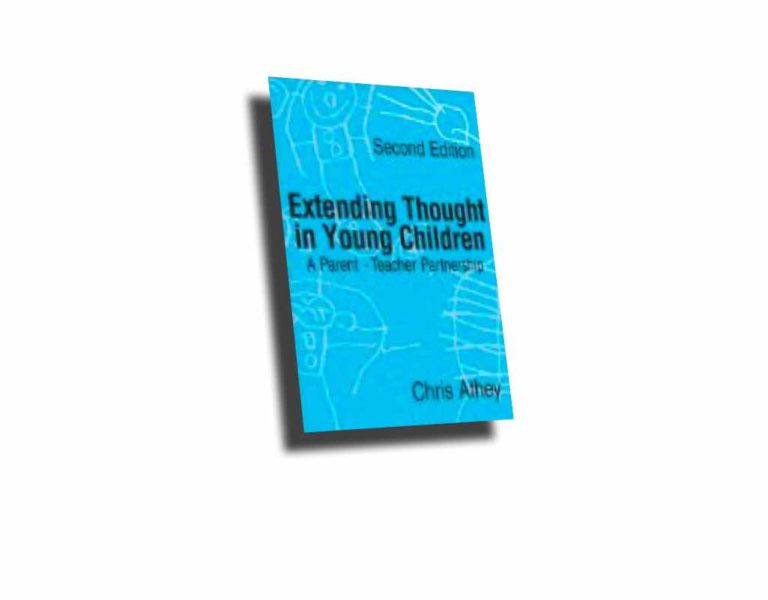

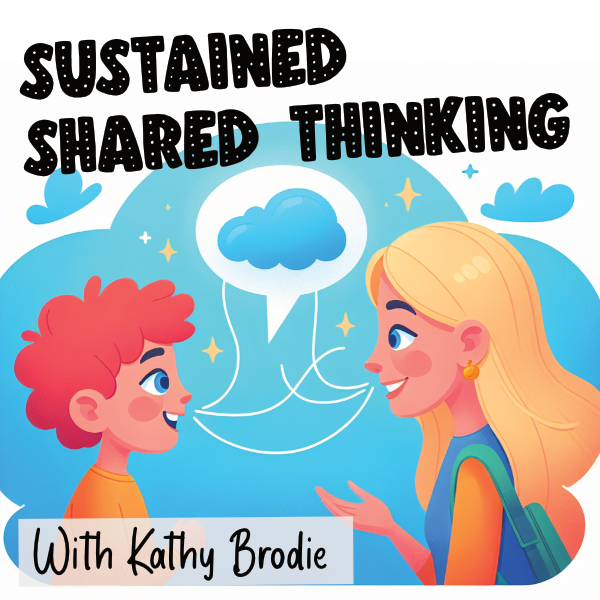
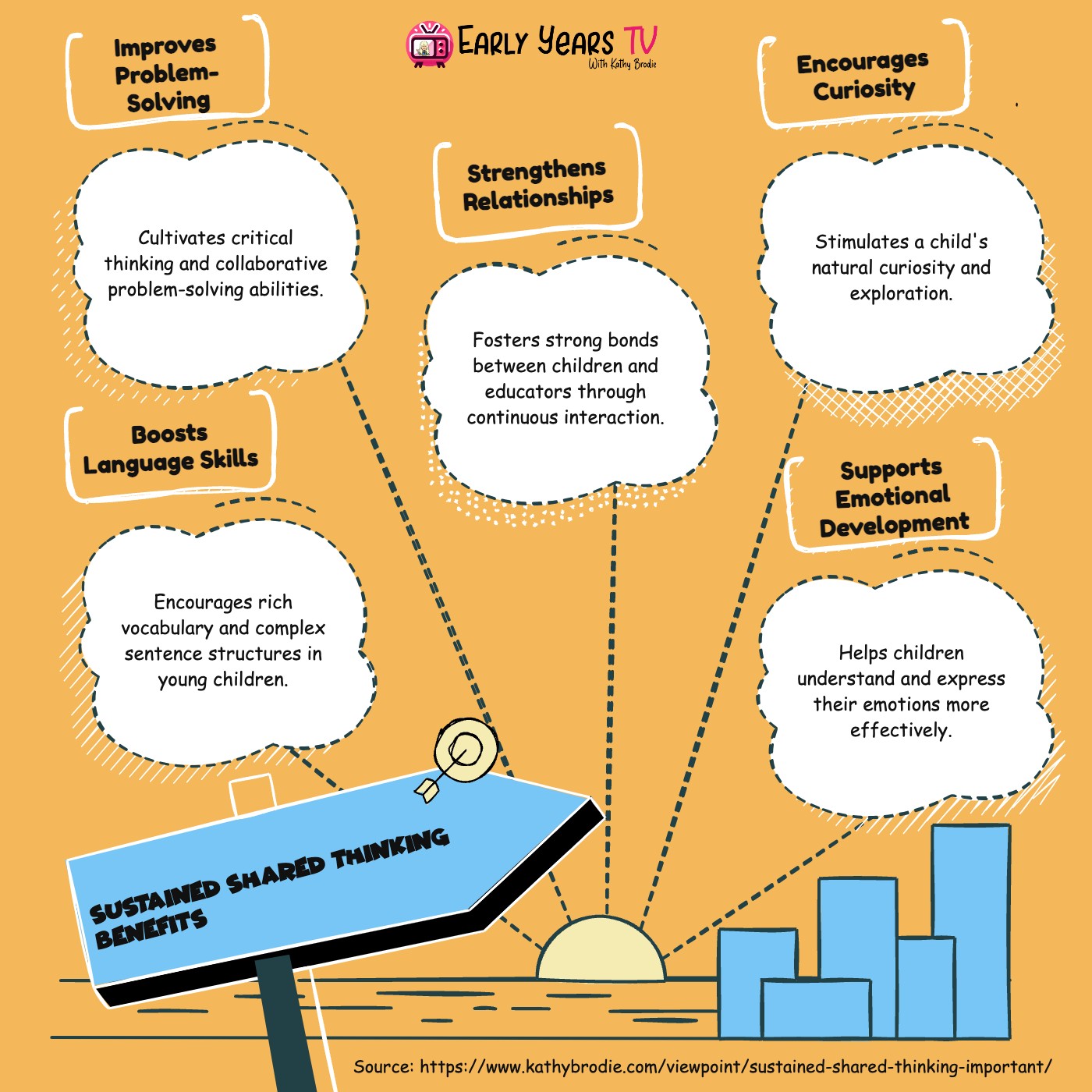
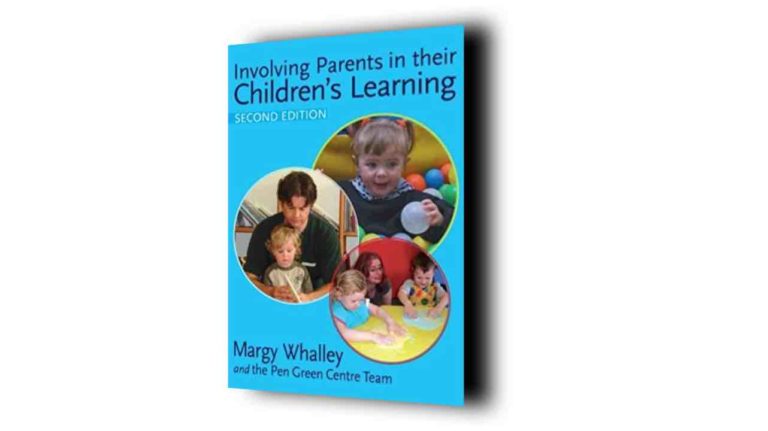
 In the Times Educational Supplement (TES) on the 23rd January there was an enlightening article about the Daycare Trust attracting more men into the Early Years sector.
In the Times Educational Supplement (TES) on the 23rd January there was an enlightening article about the Daycare Trust attracting more men into the Early Years sector.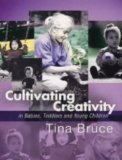
 I read with no surprise the results from the Unicef report, and the resultant reporting in the Times yesterday (11th December 2008). When all the hype and comment has been cleaned away the nugget of truth left is that a child from a disadvantaged background does not benefit from poor quality day care. Hardly earth shattering. Maria Montessori had spotted this over 100years ago. More recently the EPPE research has proved it.
I read with no surprise the results from the Unicef report, and the resultant reporting in the Times yesterday (11th December 2008). When all the hype and comment has been cleaned away the nugget of truth left is that a child from a disadvantaged background does not benefit from poor quality day care. Hardly earth shattering. Maria Montessori had spotted this over 100years ago. More recently the EPPE research has proved it. 
